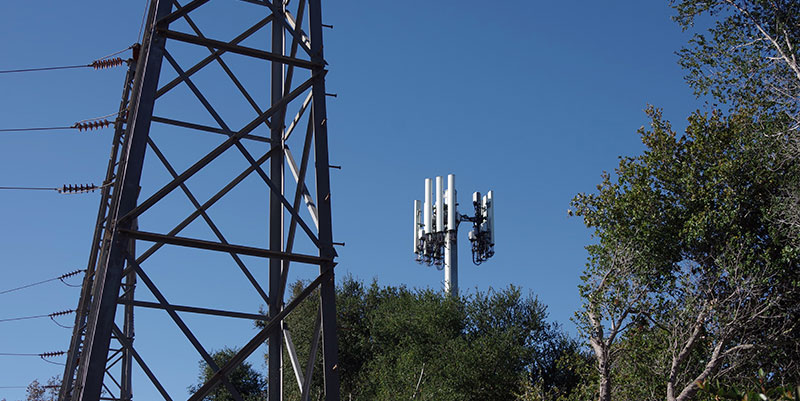5 Ways Fleet Management Can Extend the Life of Your Vehicles
Supply chains are in disarray. With a war in Europe and a third year of pandemic, vehicle maintenance, downtime and equipment replacement are all even greater expenses for companies operating fleets.1 When a vehicle or piece of equipment breaks unexpectedly, it costs money and can delay jobs. In addition to lost revenue, missed deadlines can damage relationships with clients and affect future work opportunities.

Coping with Supply Chain Constraints
With the ongoing chip shortage and increased buyer demand curbed by supply chain constraints, the cost of purchasing a used truck, for example, has increased 75% since April 2021.2 Add to that the cost and competition to replace approximately 200,000 outmoded trucks in the U.S.3 and it makes commercial sense to track, protect and maintain the assets you currently own.
As demand for new vehicles remains strong, production continues to be hindered by a lack of semiconductors4 plus shortages of parts, equipment, drivers and rising fuel costs with no end expected soon.5 So for now, it’s more important than ever to avoid breakdowns and extend vehicle life.
But how do you keep your vehicles on the road? Here are 5 ways fleet management can help you keep up with routine maintenance, avoid costly breakdowns and extend the life of your equipment:
1. Extend Vehicle Life with Fleet Maintenance Tracking
A fleet management solution allows you to monitor your equipment from anywhere at any time so maintenance can be planned, rather than waiting for a problem to occur. Well maintained vehicles can provide a longer service life than those that may be neglected due to the inability to properly track maintenance schedules.
Equipment on a regular maintenance schedule also runs far more efficiently, has less downtime and costs less to repair in the long run. Intelligent fleet management solutions keep track of your service records, sending you alerts when it’s time to perform routine maintenance. With these filters, your equipment can last longer and perform better, which helps lead to satisfied customers.
2. Reduce Unexpected Downtime with Remote Diagnostics
With remote monitoring capabilities, you can proactively identify problems before they occur. For example, if a battery is weak or an engine is generating a fault code, remote diagnostics will alert you to schedule repairs during planned maintenance intervals that prevent equipment downtime.
A fleet management solution also makes it easier for technicians to remotely diagnose problems before arriving on site for repairs. This helps streamline identifying the root cause of an issue so that technicians arrive prepared with the right parts, tools and knowledge required to repair your machines.
3. Reduce Idling and Wear and Tear with Driving Behavior Alerts
A fleet management solution alerts you to harsh driving or excessive idling, helps you minimize fuel use and reduces unnecessary wear and tear on equipment or vehicles. Identifying idling and harsh driving is also a useful way to encourage your employees to drive more efficiently, which makes your company more productive and profitable.
For example, a fleet management solution could send a report to your manager highlighting how many trucks are spending too much time idling or traveling at high speeds. This enables you to act before any damage occurs.
Rather than using valuable time to manually track equipment location, idling and harsh driving behaviors (all of which contribute to decreased efficiency and excessive fuel usage), a fleet management solution automatically monitors these activities in real time. In addition, it provides actionable insights via easy-to-read reports that help you identify where opportunities for improvement lie—empowering you to make better business decisions related to maintenance and driver behavior.
4. Minimize Miles Driven with Routing and Fuel Management
Routing and fuel tracking are key to reducing fuel costs and increasing equipment uptime. A fleet management solution helps you decrease for each vehicle the number of miles driven in order to complete tasks. This keeps drivers on the road for a shorter time, minimizes wear and tear on the vehicle, and increases efficiency by getting more work done without traveling back and forth unnecessarily.
Additionally, fleet management fuel tracking gives you real-time visibility into each vehicle so you can monitor consumption rates, and quickly identify leaks or other issues that might lead to expensive repairs down the line.
5. Increase Operator Safety and Productivity
The benefits of fleet management tracking go beyond just money saved on repairs. Well-maintained machines are safer for operators, and added safety can result in more satisfied employees and increased work performance.
In an increasingly challenging market, higher retention becomes even more important for your company. Finding ways to satisfy your employees can be key to meeting the demands of your customers.
There are many advantages to employing the right fleet management solution.
- It can increase your equipment's life span and reduce downtime, saving you money.
- It can allow you to spot problems early so that they can be handled before they become major issues.
- It can make it possible to work more quickly and efficiently, keeping you competitive.
UScellular tailors its fleet management solutions to your unique requirements. Working with our local sales representative well versed in your business, you can achieve increased profitability and productivity. Learn more about how fleet management can help you cope with supply chain restraints, avoid breakdowns and extend vehicle life.
References
- Cellular IoT Roaming Creates New Asset Tracking Possibilities (IoT For All)
- Chip availability continues to hamper OEM production, ACT reports (FleetOwner)
- Daimler Truck chair: North American demand helping set up a good 2023 (FleetOwner)
- Class 8 orders remain level as OEMs continue to fight supply constraints (FleetOwner)
- Out-of-sync supply chains are changing trucking (FleetOwner)






